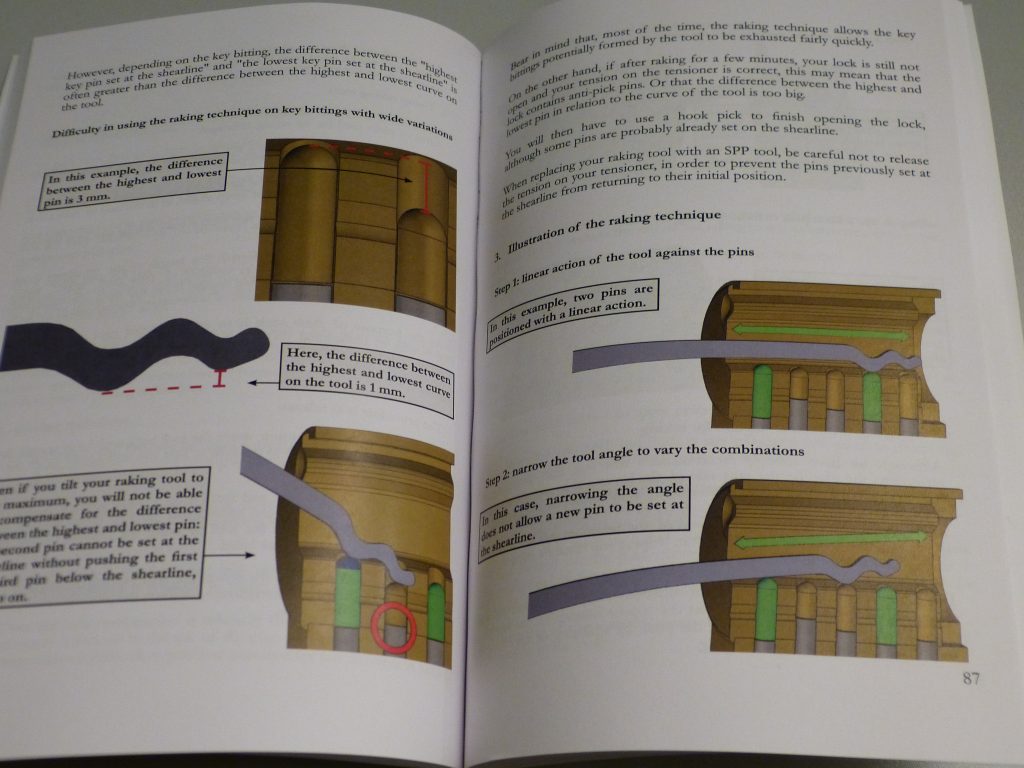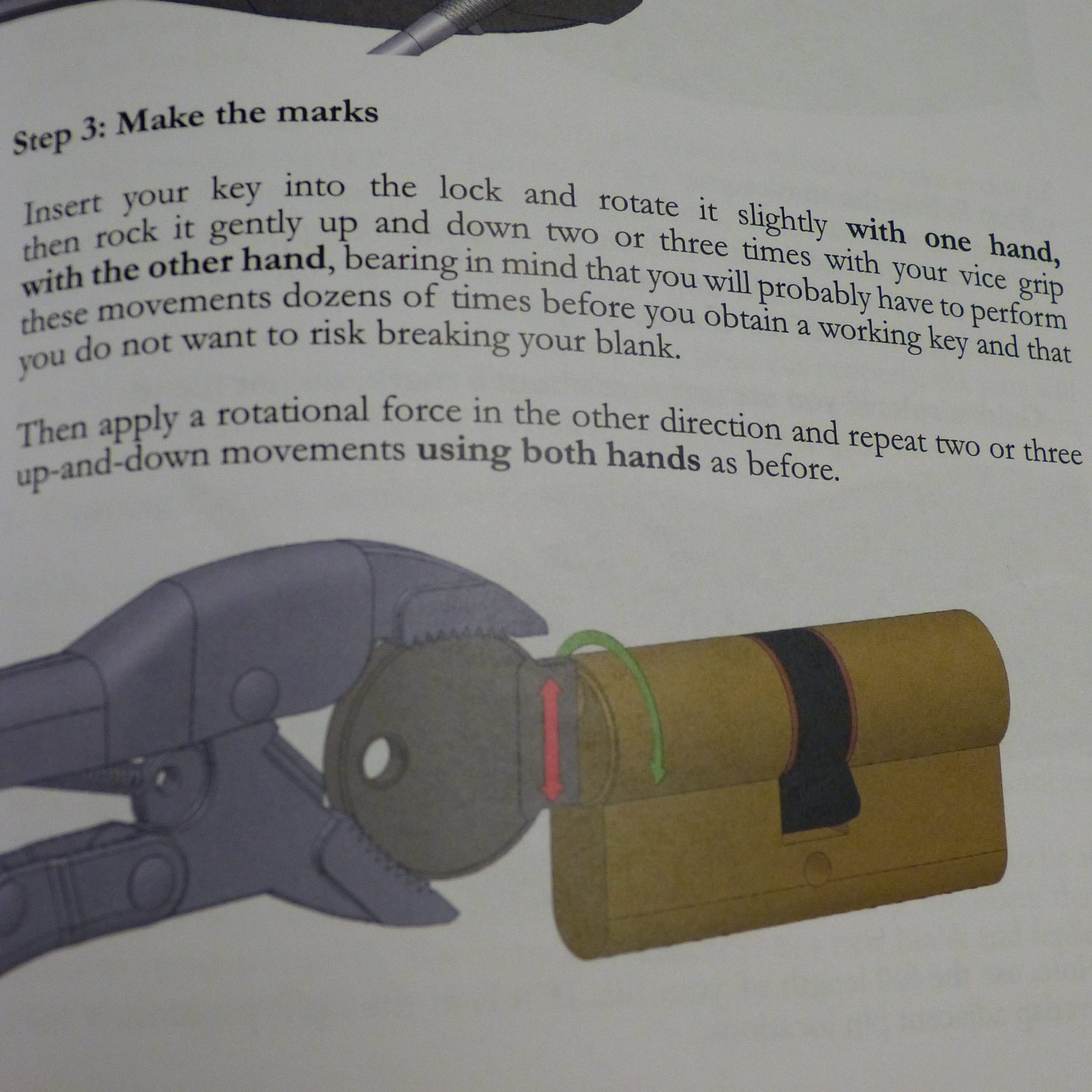Two weeks ago Alexandre “FrenchKey” Triffault published the book Little Black Book of Lockpicking on NDE techniques for Red teams and security professionals. The book has 171 pages with a broad variety of lock types and opening methods, from lockpicking to impressioning, and from making cutaways to decoding combination padlocks.

Whenever there is a new book about lockpicking I pick up a copy especially when it’s written by a friend. It sold for €35 Amazon that does the printing and distribution of this book. The book is a good read and is a continuation of the OFC guide to lockpicking (free pdf) that’s also written by Alex and translated by MrAnybody. The OFC guide is all about lockpicking while this book includes many more topics including bumping and impressioning, both topics I’ve paid extra attention to.
The first thing I noticed was the many high detailed graphics used. Alex modeled the locks, lockpicks and other tools and included 3D renderings in the book as virtual cutaways. The style works very well for this book. It does not just write about a concept but also shows how it is done.

The book is 27 chapters and on average six pages for each subject, this inevitably means there is not too much room for details or nuances. This is a pity as Alex has the ability to give insights I would never think of.

I want to mention that the advanced topics in the book like (self) impressioning will take a long time to get good at. For me, I’ve experienced it takes many failed attempts to do these attacks, even in a controlled environment. Attacks like self-impressioning took me a very long time to make work. I can only imagine how it would be to attack doors on an assignment.
This is one of the better books on the basics of NDE and I recommend getting a copy for yourself or to to share. When you share the book, do keep in mind the book is written for red teams on an assignment and not for hobbyists. It is never a bad thing to give a small lecture on the locksport ethics and our view on locks as a puzzle with the book.
